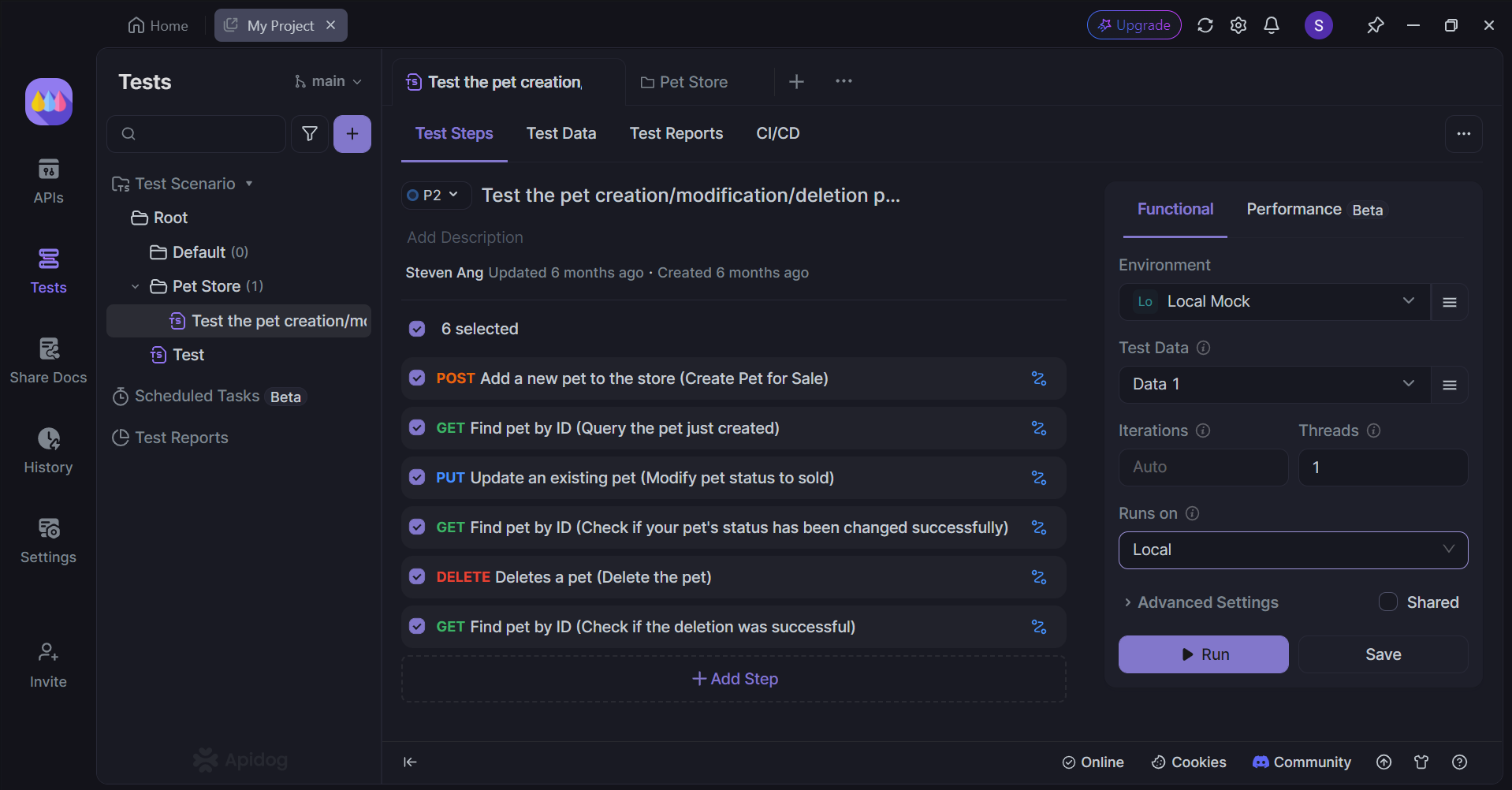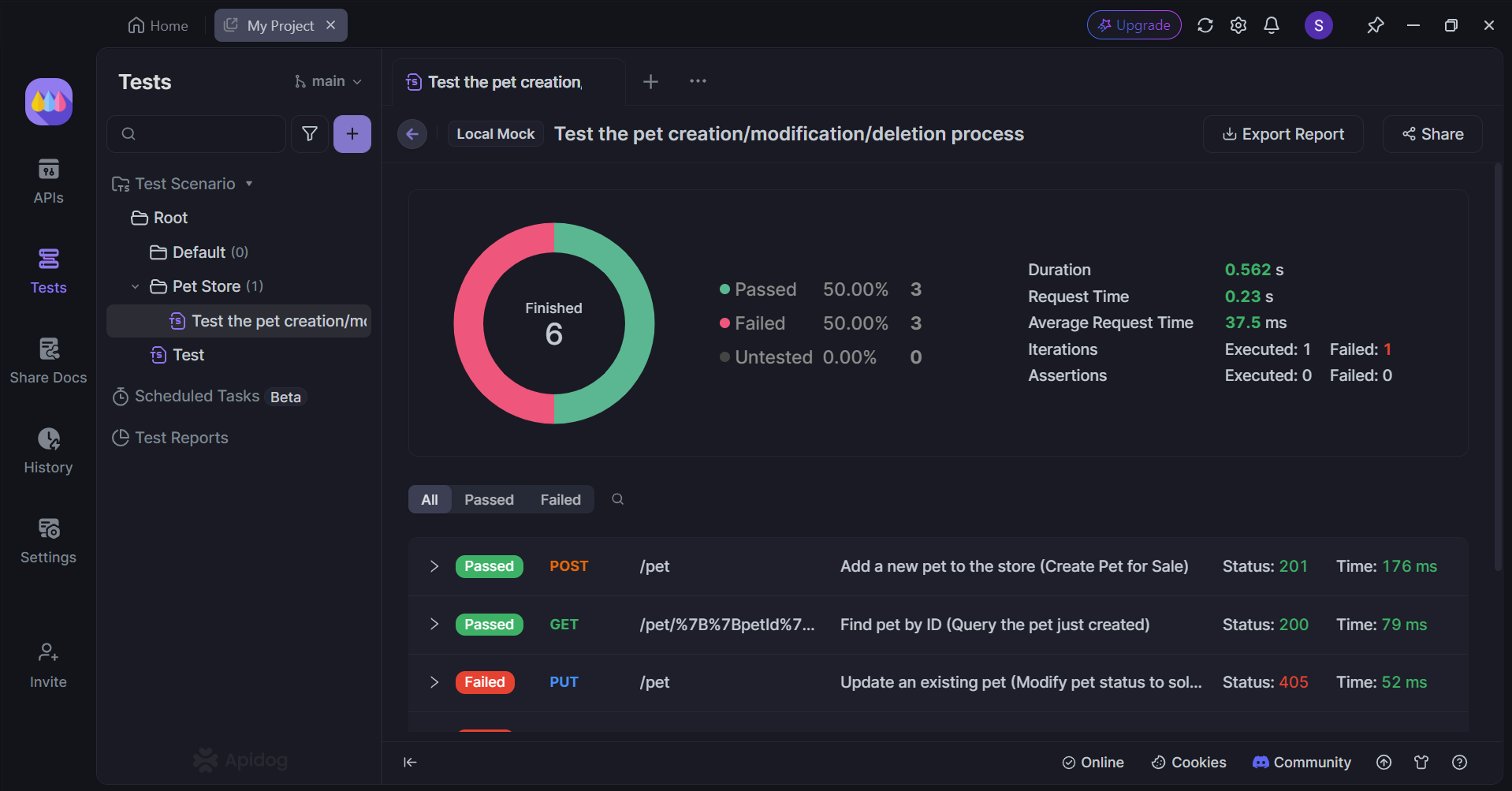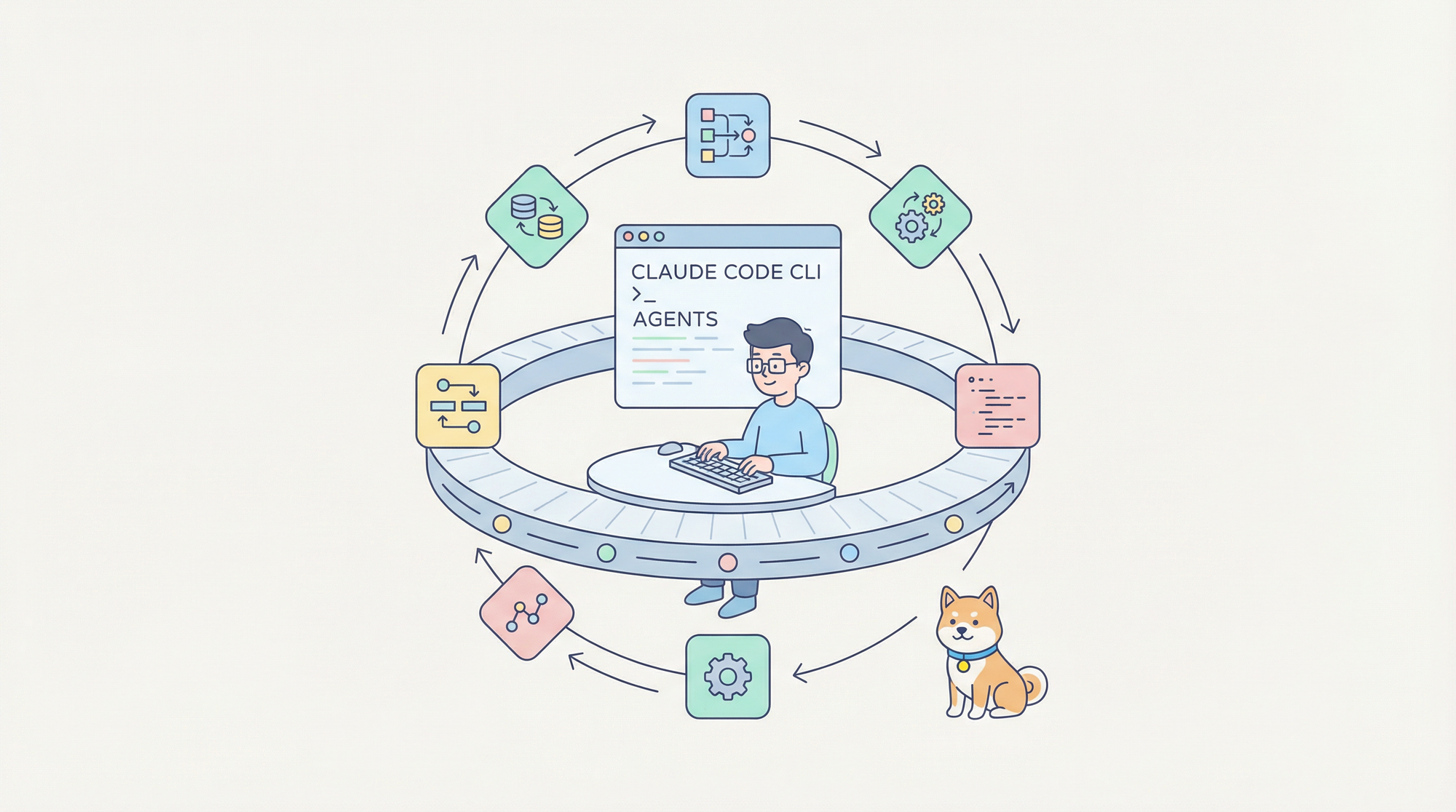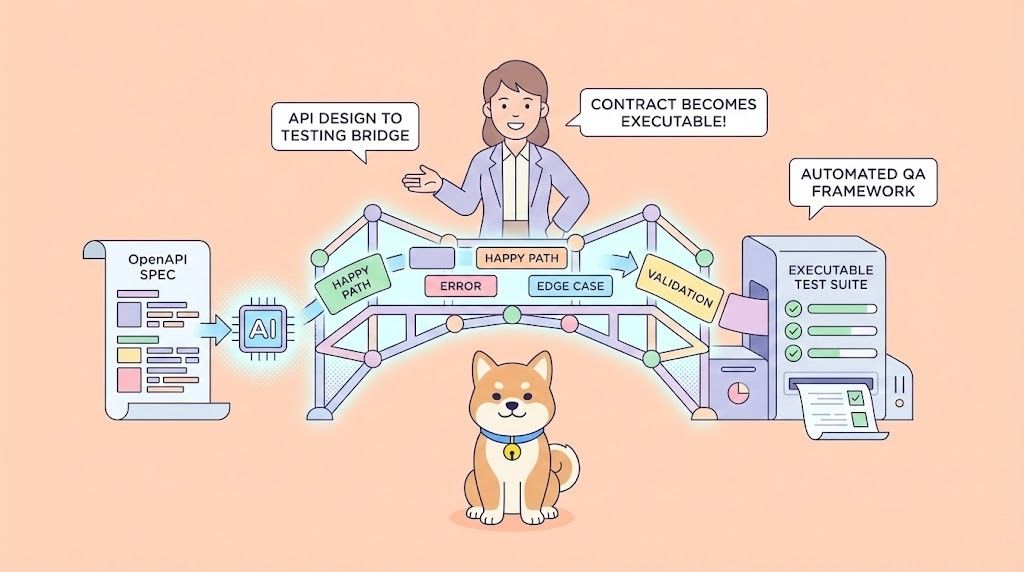Tosca and Selenium represent two distinct approaches to test automation. Tosca is a commercial, model-based testing tool offering codeless automation, while Selenium is an open-source framework requiring programming expertise. This fundamental difference shapes their respective strengths and use cases.
This powerful platform seamlessly integrates design, testing, documentation, and mock server capabilities into a single interface.
Developers can leverage advanced features such as automated CI/CD pipelines, customizable scripting functionality, and intelligent code generation to accelerate their development process.
To find out more about Apidog, make sure to check out the button below!

Tosca Overview
Key Features
Tosca excels in providing comprehensive test automation capabilities through its distinctive features:
- Model-Based Testing: Creates test models that automatically generate and execute tests, reducing maintenance effort
- Scriptless Automation: Enables non-technical users to create automated tests without coding knowledge
- Self-Healing Capabilities: Automatically updates test cases when application changes are detected
- Risk-Based Testing: Prioritizes critical test cases to maximize testing efficiency
Common Use Cases
Tosca finds extensive application in:
- Enterprise-level testing for complex applications
- SAP and mainframe testing environments
- End-to-end functional testing across multiple platforms
- Integration testing with various technologies
Selenium Overview
Key Features
Selenium's strength lies in its flexibility and extensive support:
- Multi-Browser Support: Enables testing across various browsers with a single script
- Language Flexibility: Supports multiple programming languages including Java, Python, and C#
- Cross-Platform Testing: Functions across different operating systems
- Reusable Test Suites: Allows test script reuse across multiple scenarios
Common Use Cases
Selenium is particularly effective for:
- Web application testing across browsers
- Automated regression testing
- Continuous integration and delivery workflows
- Cross-platform compatibility testing
Comparative Analysis
Ease of Use
- Tosca: Offers user-friendly interface suitable for non-technical users
- Selenium: Requires programming knowledge and technical expertise
Cost Considerations
- Tosca: Commercial tool with licensing fees but comprehensive support
- Selenium: Free, open-source solution with community support
Integration Capabilities
- Tosca: Seamless integration with CI/CD tools and third-party applications
- Selenium: Strong integration with testing frameworks and development tools
Testing Scope
- Tosca: Comprehensive testing across web, mobile, API, and desktop applications
- Selenium: Primarily focused on web application testing
Making the Choice
Choose Tosca When:
- Your team lacks technical coding expertise
- You need comprehensive enterprise-level testing
- Budget allows for commercial tool investment
- Testing requires complex end-to-end scenarios
Choose Selenium When:
- Your team has strong programming skills
- Web application testing is the primary focus
- Cost is a significant factor
- You need flexibility in test script development
Best Practices
For Tosca Implementation:
- Start with small test cases and gradually scale up
- Leverage reusable components
- Integrate with CI/CD pipeline
- Focus on risk-based testing prioritization
For Selenium Implementation:
- Utilize page object model design pattern
- Implement proper wait mechanisms
- Maintain clean and organized test scripts
- Take advantage of parallel test execution capabilities
Use the Best Testing Tool - Apidog
Aside from Tosca and Selenium, you should consider using Apidog for testing your applications, especially if they are intertwined with APIs.

Experience Apidog's powerful API testing capabilities - just one part of this complete development platform that simplifies API building, mocking, and documentation.
Let's explore how Apidog makes API testing intuitive and efficient!
Apidog Test Scenarios
Apidog has a unique testing feature called test scenarios.


Orchestrate complex API testing scenarios through Apidog's sophisticated visual environment, which enables seamless test sequence creation and endpoint chaining. The platform's intelligent workflow system allows developers to establish logical connections between API calls, making it ideal for testing interdependent endpoints.
Take a Look at Apidog's Test Scenario Results

Gain comprehensive insights into API performance through Apidog's sophisticated test analytics system. Each test execution generates granular performance metrics, providing a clear view of API behavior, response patterns, and execution efficiency.
Test Endpoints With Apidog

Execute instant API validations with Apidog's streamlined testing interface. The platform's efficient design puts powerful testing capabilities at your fingertips, enabling rapid endpoint verification with minimal steps.

Conclusion
Both tools have their place in the testing ecosystem, and the choice between them should align with your organization's specific needs, technical capabilities, and budget constraints. While Tosca offers a more comprehensive but costly solution with lower technical barriers, Selenium provides flexibility and cost-effectiveness for teams with strong technical capabilities.
![[Guide] A Detailed Comparison to Tosca vs Selenium](https://assets.apidog.com/blog/2024/10/tosca-vs-selenium-cover.png)



